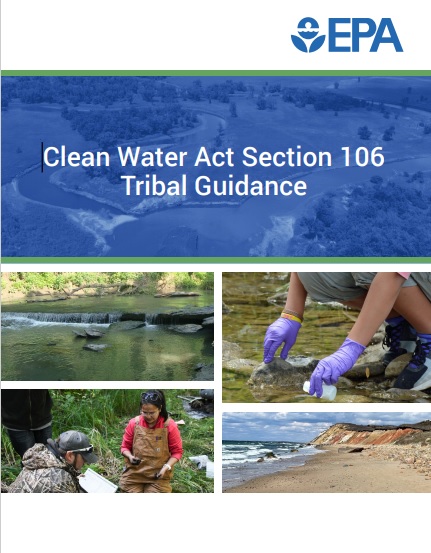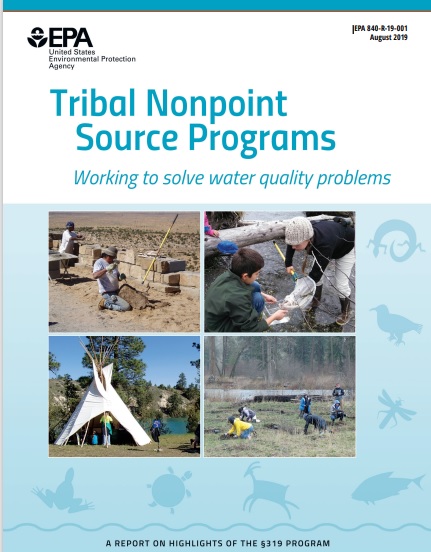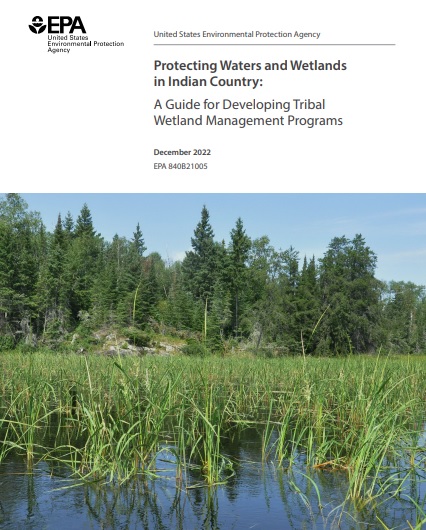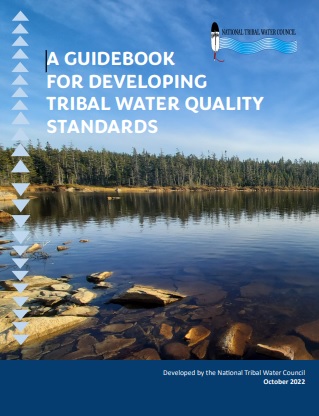Existing EPA CWA Resources/Trainings
Overview/General
 - Clean Water Act Section 106 Tribal Guidance – includes chapters on grant requirements, program development, monitoring program development/implementation (including summary table [Table 6] of common parameters), programmatic reporting requirements (including a summary table [Table 10] of reporting deliverables), program expansions - additional activities & regulatory authorities, and other funding options.
- Clean Water Act Section 106 Tribal Guidance – includes chapters on grant requirements, program development, monitoring program development/implementation (including summary table [Table 6] of common parameters), programmatic reporting requirements (including a summary table [Table 10] of reporting deliverables), program expansions - additional activities & regulatory authorities, and other funding options.
- Watershed Academy – a variety of online learning modules (see especially the water law section) and webcast recordings.
- 2023 WOTUS rule revision webinars/trainings – video recordings and pdfs of presentation slides
Regulatory & Non-Regulatory Approaches (including Water Quality Standards):
- Handbook for Developing and Managing Tribal Nonpoint Source Pollution Programs Under Section 319 of the Clean Water Act – a practical and accessible guide for tribes that covers how to develop a nonpoint source assessment report and management program, activities eligible for funding under CWA section 319, and successfully implementing a watershed-scale restoration project.
- NPS Program Sample Training Curriculum for Tribal Staff – “a list of tasks and training resources available to ensure you quickly become versed in the requirements and duties of a Nonpoint Source team member.”
- 2023 Tribal Nonpoint Source Webinar Training Series – a six-part series, each recording is approximately 90 minutes.
- Tribal Nonpoint Source Programs: Working to solve water quality problems – a report highlighting several examples of tribal nonpoint source pollution control work conducted under CWA section 319
- Water Quality Standards Handbook – a compilation of EPA’s guidance on WQS for states, tribes, and territories to use in developing and implementing water quality standards (WQS)
- TAS for the Water Quality Standards Program: Frequently Asked Questions provides answers to questions regarding the TAS for WQS application process, and TAS for the Water Quality Standards Program: Procedural Steps for Tribal TAS Applications resource outlines the steps for tribal TAS applications. A TAS Application Template for Water Quality Standards and Water Quality Certifications is available to help Tribes apply to EPA for TAS for these programs.
- EPA’s Model WQS Template for Waters on Indian Reservations can serve as a foundation for Tribes seeking to develop their own WQS. This template provides basic language covering the primary elements of WQS that a Tribe can adopt directly, while allowing a Tribe to add or modify language to align with their own water quality goals. EPA’s Tribal/State Human Health Criteria Calculator generates a customized numeric human health criteria table.
- Wetland Water Quality Standards provides an overview and information on developing and using WQS for wetlands. EPA’s Templates for Developing Wetland Water Quality Standards can be used for developing these standards.
- Key information on EPA’s Final Rule - Treatment of Indian Tribes in a Similar Manner as States for Purposes of Section 303(d) website includes factsheet, FAQ, and application template
Monitoring and Assessment (including data management):
- For compiling WQ assessments: Consolidated Assessment and Listing Methodology and the Tribal Assessment Modules on EPA’s Ambient Water Monitoring and Assessment website for more information on Water Quality Assessments including exercises to practice assessing data against thresholds and WQS.
- Developing a Tribal Water Quality Program Monitoring Strategy supplement – “The Tribal Section 106 grant award includes three programmatic reporting deliverables, one of which is a Monitoring Strategy. This document addresses in more detail the development of a Water Quality Monitoring Strategy.”
 - Protecting Waters and Wetlands in Indian County: A Guide for Developing Tribal Wetland Management Programs – a guide for tribal natural resource managers interested in developing a tribal wetland program, including wetland monitoring and assessment activities; this guide also includes case studies that provide examples of wetland protection and management activities
- Protecting Waters and Wetlands in Indian County: A Guide for Developing Tribal Wetland Management Programs – a guide for tribal natural resource managers interested in developing a tribal wetland program, including wetland monitoring and assessment activities; this guide also includes case studies that provide examples of wetland protection and management activities
- The Tribal Assessment Modules on EPA’s Ambient Water Monitoring and Assessment website have more information on Water Quality Assessments, including examples and technical guidance. Module 1- Understanding Water Quality Standards; Module 2- Overarching Considerations in Assessing Water Quality; Module 3- Assessing Data for Specific Water Quality Parameters; Module 4- Analyzing Data to Determine Use Support for Water Quality Assessment Reports.
- EPA’s Quality Assurance Project Plan Development Tool - includes a template and model, and supplemental technical information (statistical methods, recommended WQ criteria - under module 4).
- Example Quality Assurance Project Plan (QAPP) for Monitoring of Surface Water – an example based on a fictitious Northern California tribe planning to conduct water quality monitoring on a river system within tribal lands.
- EPA Region 10 Tribal QAPP Guidance and Template - includes examples for a water monitoring project to help the reader understand, generally, how a QAPP is written; please consult with your EPA Project Officer before using this template to ensure it is suitable for your project.
- Water Quality Data Upload with WQX – factsheets, user guides, best practices reports, video tutorials
- ATTAINS resources for users (tutorials, trainings, fact sheets) – online data submission/access
- Guidance on Systematic Planning Using the Data Quality Objectives Process - provides information on how to apply systematic planning to generate performance and acceptance criteria for collecting environmental data, including examples/case studies.
- Guidance for Data Quality Assessment: Practical Methods for Data Analysis - demonstrates how to use data quality assessment in evaluating environmental data sets and illustrates how to apply some graphical and statistical tools (e.g., statistical analysis and verification tests).
Resources from EPA Regions in the Southwest U.S.
- The Southwest Tribal Clean Water Act Training is targeting tribal communities in all or parts of EPA Regions 6, 8, and 9; here is a map of EPA Regions
- Website for the Region 6 Tribal Program
- Website for the Region 8 Tribal Affairs Branch
- Website for the Region 9 Regional Tribal Operations Committee (RTOC)
- EPA Region 9 has a webpage for Tribal Clean Water Act Programs and Grants in the Pacific Southwest that includes program and grant information and contact information for appropriate EPA staff
- Environmental Justice Thriving Communities Technical Assistance Centers (TCTACs) are supported by EPA and the U.S. Department of Energy. These regional technical assistance centers provide free training and other assistance to build capacity for applying to and managing grants, as well as other areas of technical assistance. TCTACs in the Southwest U.S. include:
- South Central Environmental and Energy Justice Resource Center (serving EPA Region 6)
- International City/County Management Association (serving EPA Region 8)
- Western Environmental Science Technical Assistance Center for Environmental Justice (serving EPA Region 9)
- Center for Community Energy and Environmental Justice (serving EPA Region 9)
Additional Useful Resources (Not from EPA)
- The National Tribal Water Council (NTWC) developed A Guidebook for Developing Tribal Water Quality Standards to assist tribes in developing a water quality standards program under tribal legal authority. NTWC held a webinar on the guidebook in January 2023.
- The Tribal Exchange Network Group (TXG) works to support tribal management, analysis, and sharing of environmental data. The TXG provides free trainings, online resources, and technical assistance.
